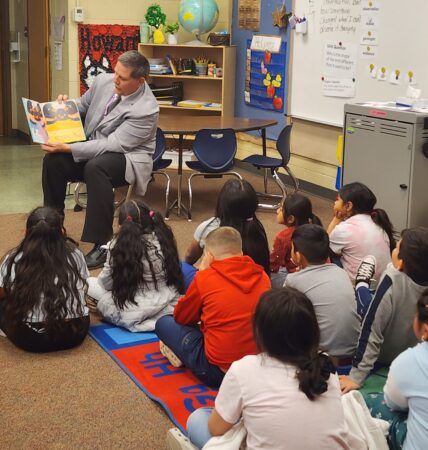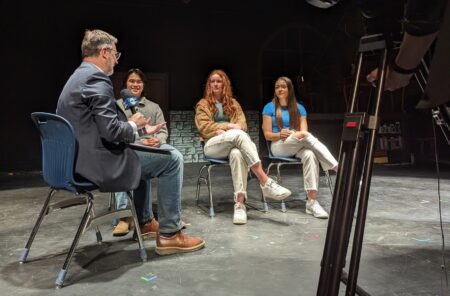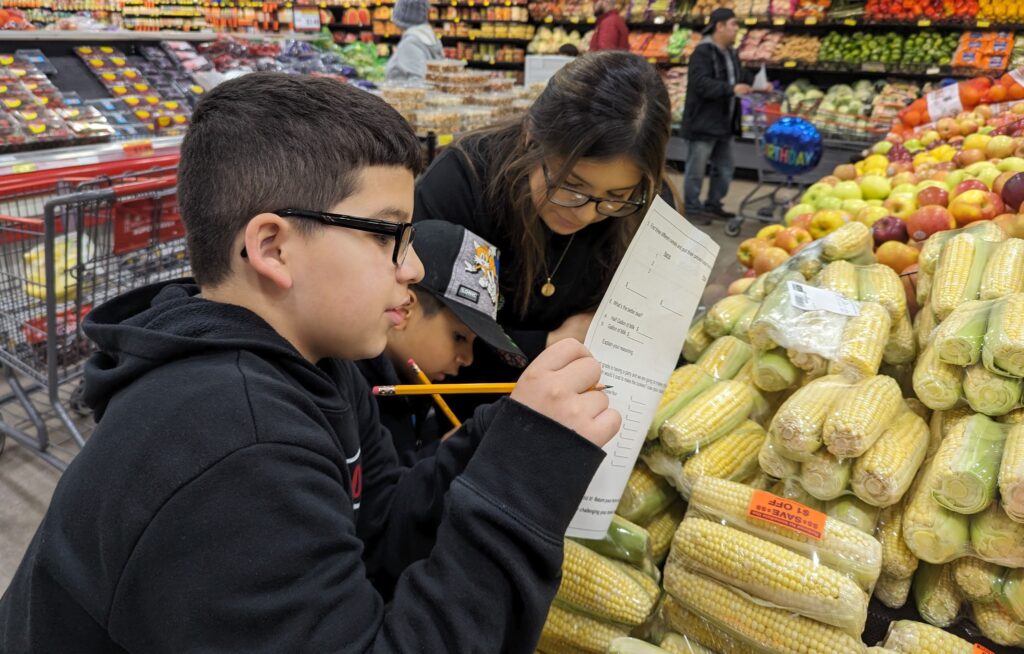During the 2017-2018 school year, a communications audit at Grand Island Public Schools showed satisfaction levels between 68% and 89% among staff, parents, and the community. Despite numerous challenges in the years that followed (including staff turnover, a global pandemic, backlash over safety initiatives, and leadership changes) the district’s resilience led to improved satisfaction levels of 89% to 94% in a 2023-2024 audit. Their secret? A new, superstar three-person communications team that empowered storytellers across the district to surface and share great stories. The scaled effort included social media, resulting in a constant flow of human content keeping the community informed and engaged. During a motivating session at this year’s National School Public Relations Association (NSPRA) National Summit, the team’s leader and veteran school PR professional, Mitch Roush, shared how he led his district to success and an NSPRA Golden Achievement award. ICYMI: here’s a recap of his presentation and insights to help other districts achieve similar goals.
Combatting Social Media Anxiety
When Mitch Roush started as the director of communications and marketing at Grand Island Public Schools three years ago, he spent time with each district principal at their 23 buildings to understand their school’s strengths and communication challenges. He found widespread fear about creating social media content, heightened by backlash and controversy amid the pandemic. That had created pervasive uncertainty about what, where, and how to post. Recognizing the burden on building leaders, Mitch and his team reframed expectations, promoting simple, positive, and proactive communication. He advised leaders to choose one platform, establish a sustainable posting frequency, and focus on posting human content (that is, images and information about real people and real stories about real students, educators, and experiences).
Dr. Jill Johnson, Class Intercom President, and former school administrator, joined Mitch during the presentation. Drawing on her experience helping schools nationwide tell their stories on social media, she echoed Mitch’s advice and reminded school PR professionals that even if everyday content creators don’t know the intricacies of social media strategies, they can definitely tell compelling stories. She emphasized that anxiety and a lack of confidence among school leaders often result in resistance and dislike of social media, but it’s crucial not to ignore it. Instead, they should learn to harness its power. By continually highlighting the value of social media for schools, leaders can help staff overcome their fears and use social media to showcase the good, authentic moments happening in schools every day.

GIPS superintendent, Matt Fisher, reads a book about autism to classroom of students at Howard Elementary School for Autism Awareness Day.
Reining In “Branded” Pages
Schools often end up with numerous branded pages for every club, sport, or class imaginable. While these stories are important, managing so many accounts can be challenging. Mitch’s team decided that consolidating school social media accounts would best serve their goal of building a unified audience. For example, consolidating all accounts for each school activity into one central activities page made it easier to maintain year-round with engaging content. This initiative, which took nearly a whole school year, required patience and persistence. First, they audited each page claiming to be part of the district. Then, they met with leaders, coaches, and teachers to understand their social media use and formed a sustainability plan to consolidate the pages into central district accounts. Once they established plans, Mitch and his team created policies to enforce the changes now and in the future.

Three students at Grand Island Senior High being interviewed for the local news about their “College & Career Ready” stories.
Centralizing district accounts is crucial for managing both public-facing content and behind-the-scenes logistics. Dr. Jill noted that schools often face employee turnover, and when district-branded pages are linked to personal accounts, it can be impossible to regain access. This leads to the creation of even more accounts, further cluttering the district’s social media presence. For current and prospective parents, it is crucial to have easily identifiable and accessible official district accounts, as social media is often the first place parents look when researching potential schools. While a heavy lift, Dr. Jill noted that reining in rouge school social media accounts is always worthwhile.
Getting Buy-In
When rolling out major systemic changes, gaining buy-in from staff is an important hurdle. Mitch and his team found it worthwhile to prioritize one-to-one onboarding and training. They each spent at least an hour at each school to teach personnel what they needed to know, but also to dive into the why behind the changes. An increased understanding allows for a smoother transition and better adoption of changes. He stressed the importance of providing updates to everyone involved along the way, noting that his district was made fully aware of the changes coming before they were implemented. After the training, building teams could access resources provided to them via their intranet.
When teaching staff about new systems and processes, it’s also a good opportunity to teach them about the types of content you want them to create or help create. Many people lack confidence in content creation, so provide detailed instructions. Be specific in your asks and teach your storytellers how to achieve great visuals. When you want certain photos, create shot lists to make it easy for them to gather content. Use this time to get your teams excited about telling their stories and continue to reinforce the positives throughout training.
Creating Strong School Social Media Content
Now that your team is set up for success and you have buy-in from your district storytellers, it’s time to start creating social media content. But what do you need, and what content should you be posting? For districts just starting, Mitch recommends four essentials: a smartphone, Canva for Education, a social media management platform built for the needs of schools, and student storytellers. The best way to share an authentic school experience on social media is by inviting those who are living it to create content. Your students are the real professionals of social media, so while it may be nerve-wracking, let them show you what they can do. The result will be more authentic, engaging content that transforms your school’s social media presence for the better.
Mitch recommends posting a combination of branded and organic content. He shared two videos GIPS posted on social media. The first was a branded, professional documentary-style video that shared the story of a high school senior who gifted a book to every student at her elementary school as part of her National Honor Society community project. The second video was an unedited, thirty-second clip of an eighth-grade teacher instructing students to find the principal and interest in investments. On Facebook, the organic clip had nearly 10,000 views while the branded video received almost 2,000 plays. This indicated two things: school communities genuinely want to see classroom content, and impactful social media content doesn’t always require professional production. Here are 10 specific content ideas that have also been successful for GIPS:
- When in doubt, share a photo of a happy student!
- Video snapshots (i.e. 30 Seconds @[insert school])
- Use the focus area and curriculum strategy as your post.
- Canva template for student celebrations
- Highlight students earning positive office referrals (put ‘em on the wall too!).
- One question videos. (“What does it mean to be an Islander?”)
- Building scavenger hunts. (“Can you guess the media center?”)
- Weekly activities graphic + Canva Template + photo(s).
- Quick student explainer videos. (“What is WIN time?”)
- Weekly staff shout-outs.
To find a balance of content, Mitch and his team have equipped building storytellers with the knowledge that strong school social media content teaches, informs, celebrates, or advocates, making it easier for them to create content and tell diverse stories.

Students from Wasmer Elementary School exercise their math skills while grocery shopping at Family Math Night.
Telling Stories Matters
In a heartfelt, personal story to end his presentation, Mitch highlighted the impact of Mrs. Thorne, a dedicated educator with over 35 years of service at a GIPS elementary school who is known and respected throughout the district. When Mitch’s family moved to the community just before the start of the school year, they knew nobody. Mrs. Thorne personally welcomed his daughter to school each day, encouraging her with a hug and the words, “Go conquer the world.” This story exemplifies the positive influence educators have on students and underscores the importance of sharing these impactful stories.
Ready to empower storytellers across your school or district to help tackle social media? Class Intercom offers a robust, cost-effective solution built by educators for educators. With unlimited users, automatic archival, and key moderation features, we’re here to help. Learn more and connect with our team below.
